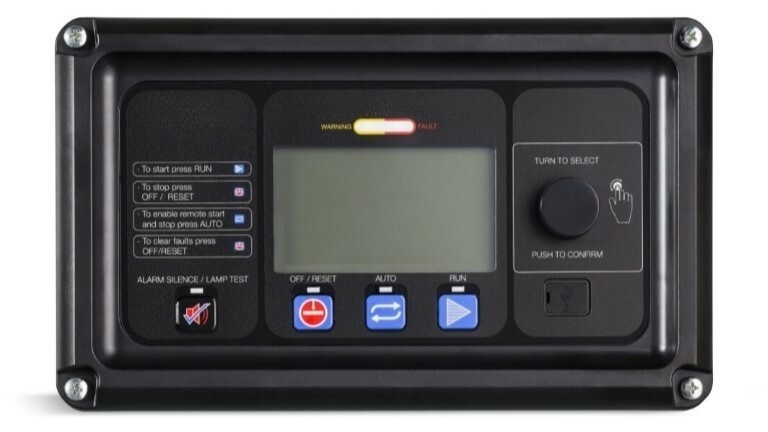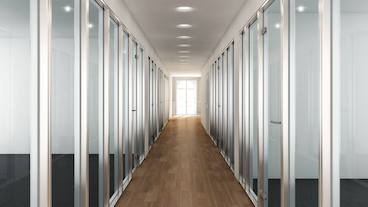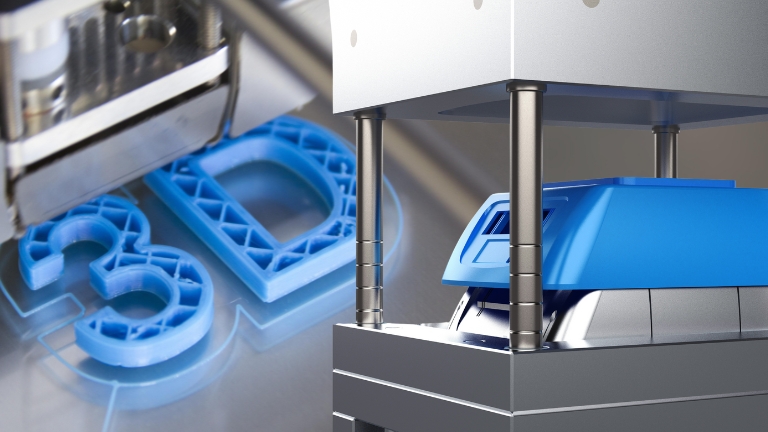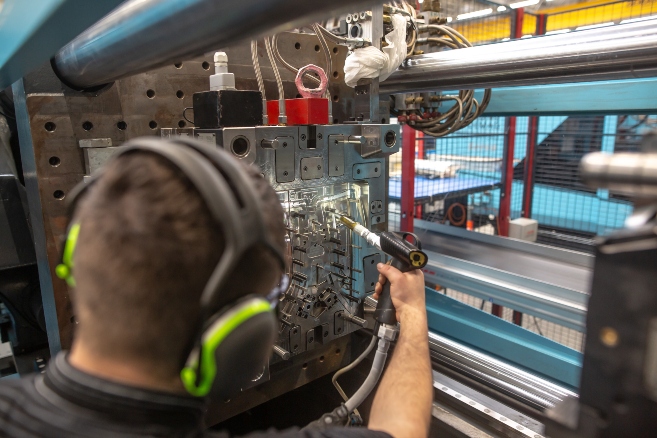Surface acoustic wave (SAW) touch screen manufacturer
SAW touch screens—ultrasonic sound waves to detect touch commands
Nelson Miller Group has the expertise to integrate SAW touch screen technology in your HMI device.
What is a SAW touch screen?
Surface acoustic wave (SAW) touch screens were developed mainly to address the drawbacks of low light transmittance in resistive film and capacitive touch panels. SAW technology is simply better for displaying detailed graphics and vivid colors. A SAW touch screen features a digital display interface that’s responsible for both creating images and supporting touch commands. SAW touch screens differ from other types of touch screens in that they use ultrasonic sound waves to detect touch commands.
Public information kiosks, vending and ticket sales kiosks, many high-traffic indoor kiosks, and gaming stations (casino and other gaming monitors) are major adopters of the technology.
How do SAW touch screens work?
Surface acoustic wave touch screens consist of one glass sheet with transmitting transducers, receiving transducers, and reflectors. When one touches the screen, it disrupts the ultrasonic waves, causing a decrease in their amplitude.
- Transmitting transducers. Transmitting transducers generate ultrasonic waves that travel across the surface of the glass. Two surface acoustic sound waves are transmitted—one for vertical detection and the other for horizontal detection.
- Reflectors and receiving transducers. Each sound wave spreads across the screen by bouncing off reflector arrays along the edges of the display and is detected by two receivers for each axis. The ultrasonic waves are reflected by the reflectors and received by the receiving transducers.
- Controller. The SAW touch screen’s controller detects any disruption and interprets it as a touch command. The precise position of the touch is calculated based on the time it took for the wave to be absorbed and the change in the amplitude of the wave. The time at which the sound waves arrive at each receiver is known because the velocity of the acoustic wave through the glass is known and the size of the display is fixed. The controller measures the time at which the received amplitude dips to determine the X and Y coordinates of the touch location. In addition to the X and Y coordinates, SAW technology can also provide Z axis (depth) information.
The advantages of SAW touch screen technology
- Enhanced clarity. SAW touch screens excel in maintaining the clarity of the display because they require no additional layers on top of the screen. In addition, the acoustic waves don’t affect the visual output, resulting in clear and sharp images. They allow excellent light transmission because the screen surface is glass.
- Highly responsive technology. SAW touch screens can register a minimal touch on the display interface with little or no pressure. No extra force is required to register a touch.
- Versatility in input methods. Because SAW touch screens don’t require a conductive object, they work with a bare finger, a gloved finger, or a soft-tip stylus. However, a hard object like a pen, credit card, or fingernail won’t work because they don’t absorb ultrasonic waves.
- Durability and longevity. There is little or no stress on the display because SAW panels require soft light touch. Additionally, because the panel is all glass, there are no layers that can be worn or damaged over time.
- Multi-touch. SAW touch screens excel in single-touch applications and also allow dual touch capability.
- Only technology with z-axis control. The screen level of sensitivity can be increased to the point that a hand near the touch screen can be detected. Adding a z-axis or pre-touch function refers to the ability to sense or measure the force or pressure applied to the screen before the actual touch event occurs.

When to choose SAW touch screens
The reasons a majority of SAW touch screens are used in public environments are: 1) they can be as large as 50” —an option not available in most other touch screen technologies, 2) their high touch sensitivity ensures a seamless and frustration-free user experience, and 3) the hardiness of the glass material makes them very durable for a long time with a high level of activation. In the healthcare sector, the screen’s clarity is a crucial factor in medical imaging applications which makes this solution very attractive.
SAW touch screens are rarely used in outdoor environments, since small debris, water drops, and oil droplets can cause false triggering. Dust and dirt can accumulate and obstruct the reflectors and transducers and cause malfunctioning. Solid contaminants on the screen can create non-touch areas until they are removed. If the application is exposed to these external factors, it may not be practical to frequently wipe or clean the device, and therefore a SAW touch screen might not be the best choice. Please note that some manufacturers have developed a dust-proof strip sealing method to achieve moderate dust-proof and slight waterproof functions of the screen.
Finally, these devices can be built to be anti-vandal, with heat-strengthened glass used on the screen and sensors and plastic covers over the sensors. The SAW touch screen is likely superior to capacitive screens in terms of anti-scratch and anti-riot performance.
The future of SAW touch screens
A few favorable trends may help the broader adoption of the technology, despite its usually higher costs compared to other technologies. There is a growing demand for larger touch screens with higher resolution and multi-touch capabilities. The technology can also be deployed to a curved surface, benefiting some markets (like automotive), which are shifting towards flexible and curved touch screens and devices. Finally, sectors like healthcare and retail are increasingly adopting touch screens; two sectors not as impacted by the lack of dust and waterproof capabilities of SAW screens as the industrial sector, for example.
NMG engineers have expertise in the principles and applications of SAW touch screens. Combined with our rich network of specialized manufacturing facilities, your finished interface benefits from our nuanced decision-making in the design, technology selection, and manufacturing.
Ready to start a project today?
Case studies
See real-world examples of how NMG has helped customers across the full spectrum of the supply chain, from design to delivery.
Read our blog!
Access industry updates, helpful how-tos, engaging infographics, and other resources for engineers and supply chain professionals on the NMG Blog.
Get in touch!
We can’t wait to create winning solutions with you.
For general inquiries, please fill out this form and our team will be in touch shortly.





